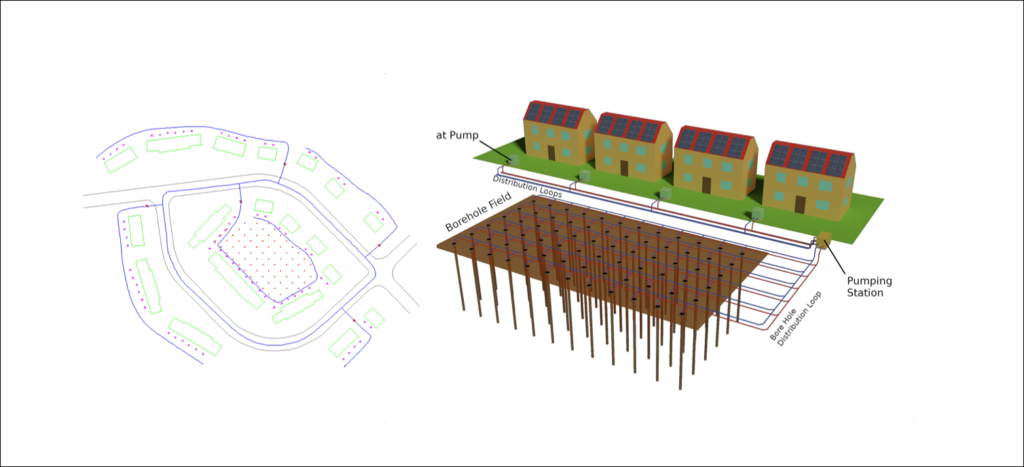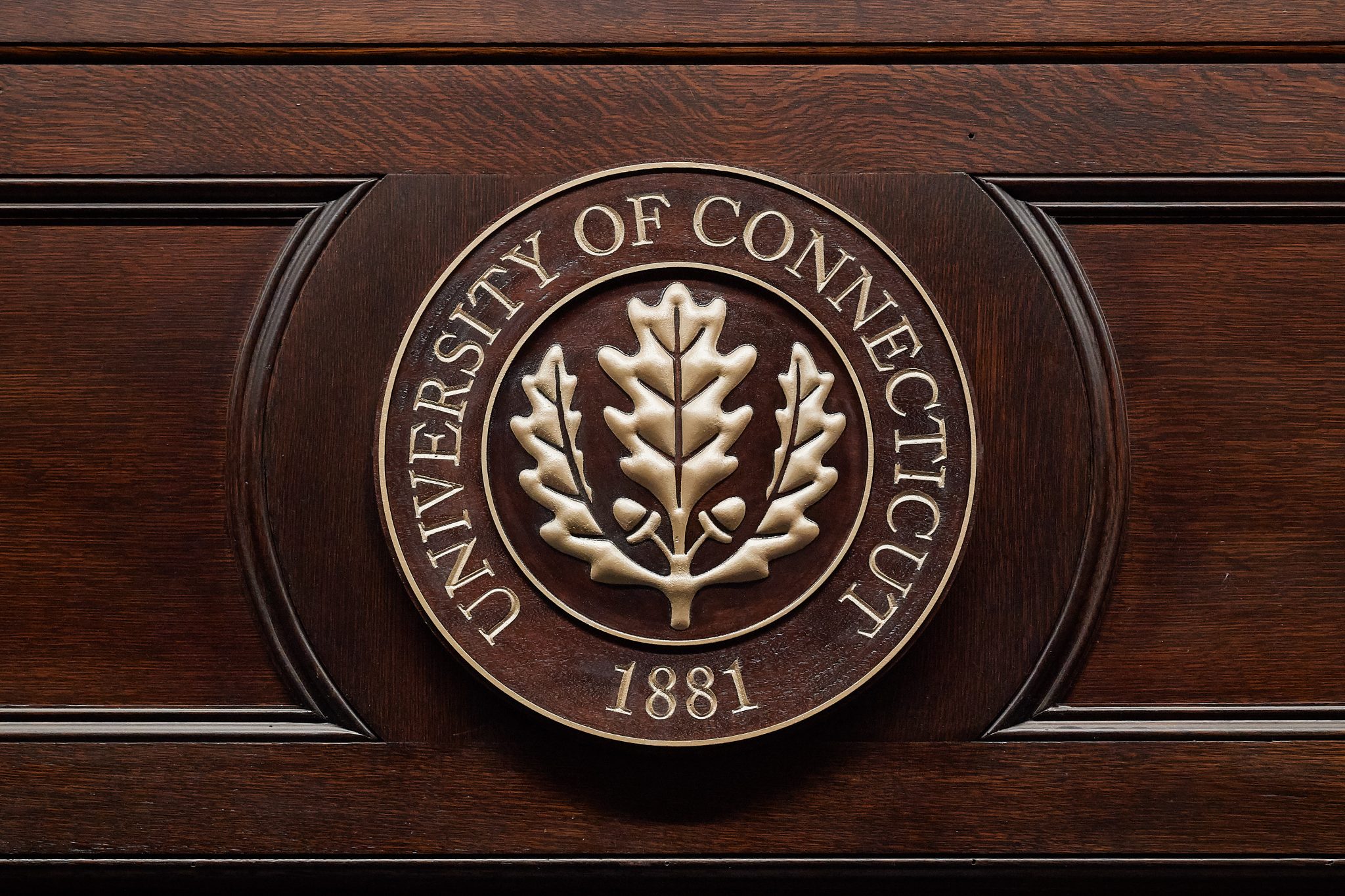By Olivia Drake, Written Communications Specialist
Researchers at the University of Connecticut are scratching beneath the surface to supply renewable energy to an affordable housing development.
Funded by a $700,000 clean energy grant, a team from the Pratt & Whitney Institute for Advanced Systems Engineering (IASE) is designing an innovative geothermal heating and cooling system which uses natural heat stored under the Earth’s surface.
When implemented, the system will save a staggering 155 tons of CO2 emissions annually while improving air quality for the 21 handicapped, 19 elderly, and 100 female-headed households who call Ulbrich Heights in Wallingford, Connecticut home. The unit will serve at least 50% of the heating and cooling loads of the 132-unit complex.
“That’s true, measurable, and direct impact!” said George Bollas, director of the IASE and Pratt & Whitney Endowed Chair Professor of Chemical and Biomolecular Engineering. “The project will strengthen UConn’s green energy and climate change research portfolio, engage and support communities within the state, and translate systems engineering research to practices that have direct impact on Connecticut buildings’ decarbonization efforts.”
The Ulbrich Heights project was funded this spring by the U.S. Department of Energy (DOE) and is one of 11 communities nationwide to receive $13 million in support. The projects are part of President Joe Biden’s Justice40 initiative, which supports disadvantaged communities that are marginalized, underserved, and overburdened by pollution.

UConn’s role in the project is being spearheaded by geothermal energy expert Ravi Gorthala, IASE associate director of research programs, professor-in-residence of mechanical engineering, and mechanical engineering Ph.D. candidate Prathamesh “Prat” Patil. The duo also serves UConn’s Southern New England Industrial Assessment Center (IAC), which helps small manufacturing companies save energy, improve productivity, and reduce waste by providing no-cost technical assessments conducted by university-based teams of engineering students and faculty.
Gorthala, the assistant director, and Patil, a student industrial energy auditor of IAC, previously worked together on a similar energy-saving project funded by the U.S. Department of Energy where they managed and installed more than 300 sensors at 10 different sites in Connecticut to monitor heating, ventilating, and air conditioning (HVAC) equipment over a three-year period.
“Geothermal or ground-source heat pump systems are highly efficient compared to conventional air-source heat pumps,” Gorthala explained. “The relatively constant temperature of the Earth makes this technology very efficient. This technology is essential for decarbonization and electrification of buildings.”

The Ulbrich Heights geothermal system will collect subsurface heat—300 feet below ground level—through a borehole field. This energy will be captured inside a geothermal distribution loop and circulated and transferred to the residences by an electric heat pump. In the warmer months, the process is reversed, and heat is extracted from the building and transferred to the ground for cooling.
Once a contract is put in place by the Connecticut Department of Energy and Environmental Protection (CT DEEP) from the U.S. Department of Energy, UConn will be tasked with leading the geothermal system design, also known as Phase I of the project. Phase I is one year in duration and will include the development of geothermal heat pump model, site survey, drilling a test well for determining the thermal properties of the soil, and identifying a mechanical contractor for the detailed design. DEEP will lead the efforts on community outreach and engagement, and the workforce needs for the technology in Connecticut.
In May 2024, the DOE will review the design, and if selected, the Ulbrich Heights project will enter Phase II. During this period, the UConn/DEEP team will begin implementing and installing the community geothermal heat pump system.
As a student with several years of energy-research experience, Patil is eager to get started.
“Through my studies at UConn and efforts with the IAC, I’ve learned how to model geothermal systems, produce simulations, develop a techno-economic analysis, conduct energy audits, and manage engineering projects, all of which will be useful for a project of this scale,” Patil said. “The [Ulbrich Heights] project is definitely an exciting opportunity and I hope to learn the true cost and performance of a geothermal vertical borehole system to hopefully spin-off on another project or develop a better system that is of a greater efficiency and lower cost.”
UConn is partnering on the Ulbrich Heights project with CT DEEP, Wallingford Housing Authority (WHA), Wallingford Electric Division, and Northeast Energy Efficiency Partnerships (NEEP). “Supporting the design and deployment of geothermal heating and cooling will expand the uses of clean energy in decarbonizing our communities,” said U.S. Secretary of Energy Jennifer Granholm in a DOE press release.

Gorthala’s interest in renewable energy dates back more than 35 years to his undergraduate years at the National Institute of Technology, Trichy, in India. There, he focused his senior design project on using solar ponds for power generation. In fact, his first name—Ravi—means “sun” in Sanskrit.
“I haven’t strayed from energy efficiency and renewable energy since then,” Gorthala said. “Renewable energy is essential for the existence of humanity until at least our star, the sun, expires.”



